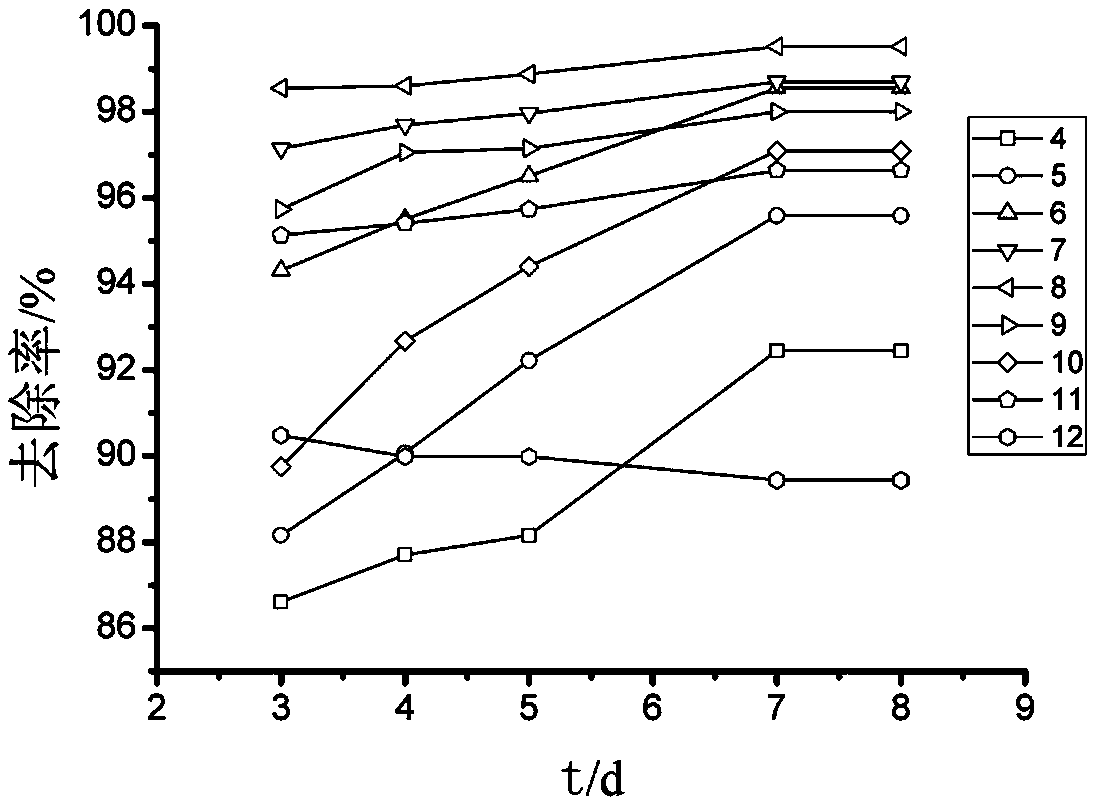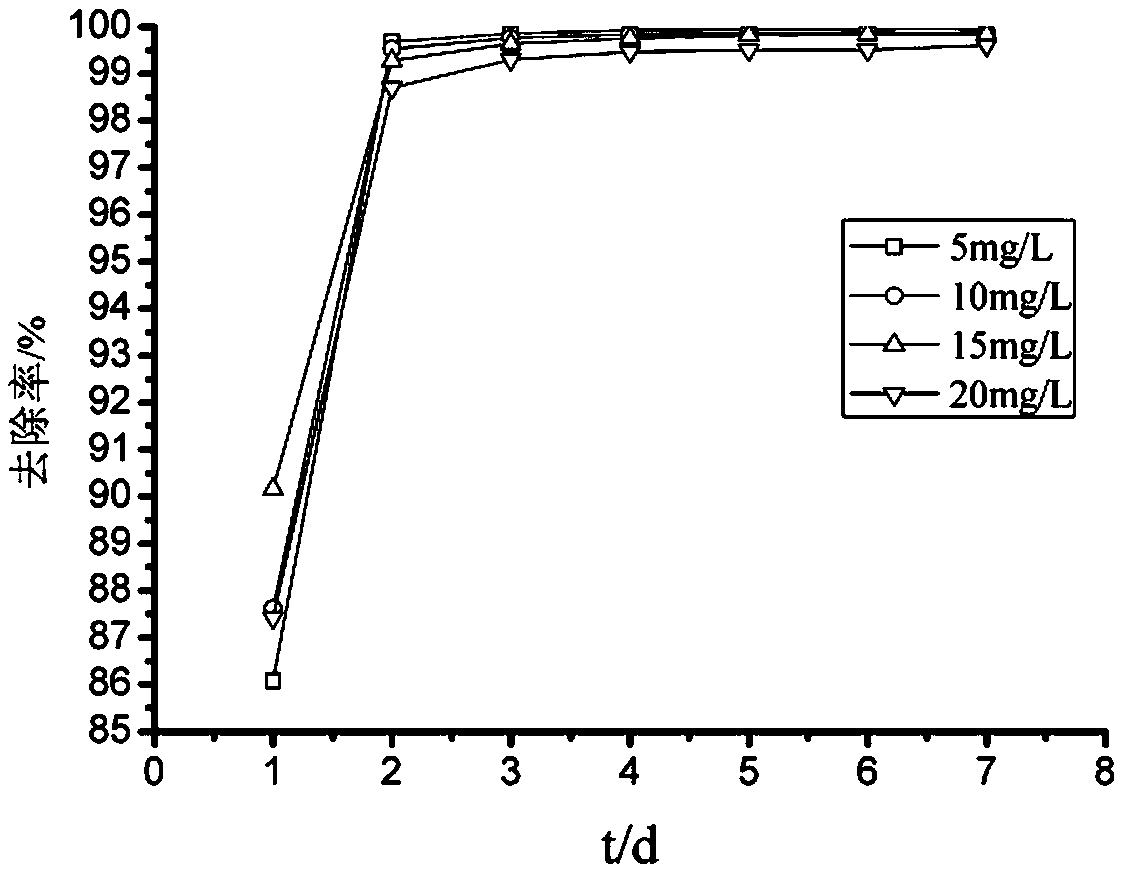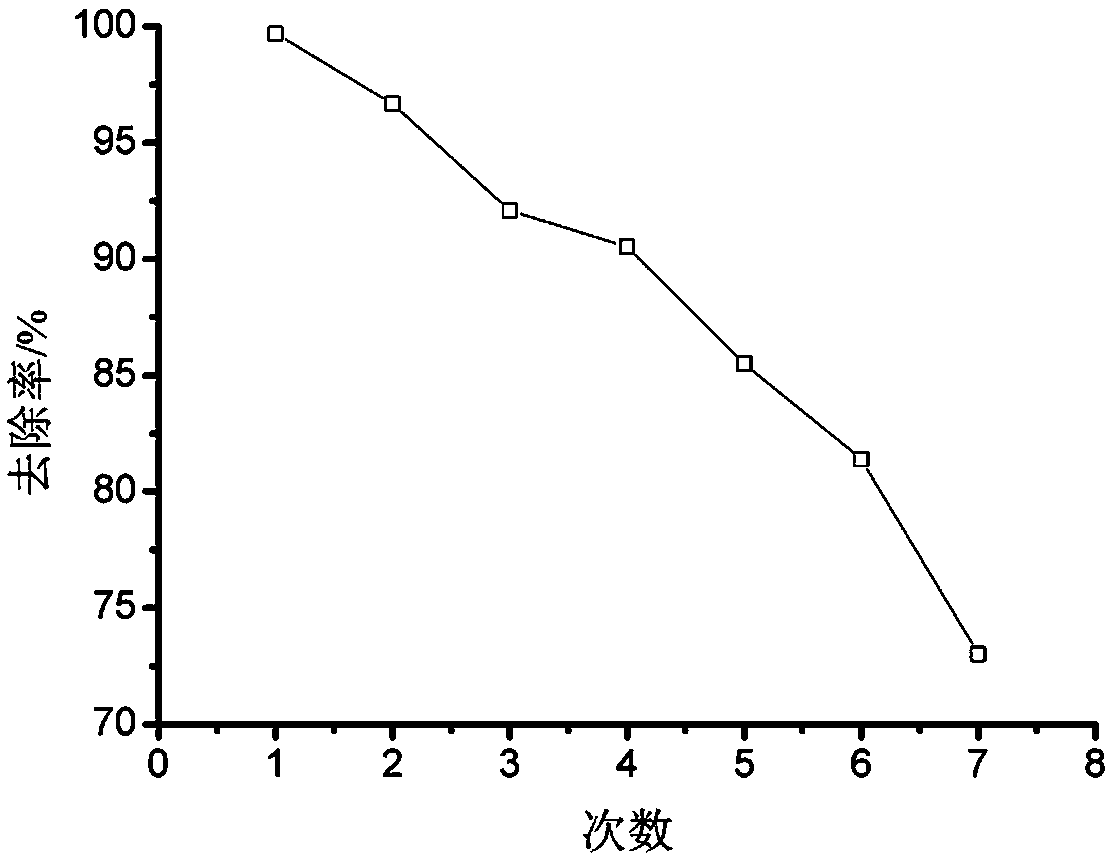A kind of adsorption method of methylene blue in printing and dyeing wastewater
A technology of printing and dyeing wastewater, methylene blue, applied in chemical instruments and methods, water pollutants, biological water/sewage treatment, etc., to achieve the effects of strong vitality, low treatment cost and high aesthetic value
- Summary
- Abstract
- Description
- Claims
- Application Information
AI Technical Summary
Problems solved by technology
Method used
Image
Examples
Embodiment 1
[0029] Mikania micrantha comes from the wild in Mangshi, Dehong Prefecture. The stem of Mikania micrantha with a length of 40cm is cut, placed in a container with tap water, and then placed indoors in a sunny place for 15 days to grow fibrous roots; Mikania micrantha, which has basically the same growth and weight, is inserted into the treatment pool containing the printing and dyeing wastewater to be treated;
[0030] The amount of printing and dyeing wastewater to be treated is 250mL, the concentration of methylene blue is 10mg / L, and the pH is adjusted to between 2 and 12. There is a plant of Mikania micrantha in each treatment pool, and samples are taken at different time periods to determine the concentration of methylene blue in the printing and dyeing wastewater. Calculate removal rate, the result is as figure 1 shown;
[0031] Among them, when the pH of printing and dyeing wastewater was 2, Mikania micrantha died on the 2nd day, and the adsorption rate was 55.14%; whe...
Embodiment 2
[0033] Cut off the stem of Mikania micrantha with a length of 40 cm, place it in a container with tap water, and then place it indoors in a sunny place to cultivate for 15 days, until it grows fibrous roots; select Mikania micrantha with a fibrous root of 10 cm, basically the same growth, and basically the same weight. Insert it into the treatment tank containing the printing and dyeing wastewater to be treated;
[0034] The printing and dyeing wastewater to be treated is 250mL, the concentration of methylene blue is adjusted to 5, 10, 15, 20, 30, 40, 50mg / L, and the pH is 8. There is a plant of Mikania micrantha in each treatment pool, and samples are taken at different time periods. The concentration of methylene blue in the printing and dyeing wastewater, calculate the removal rate, the result is as follows figure 2 shown;
[0035] Among them, Mikania micrantha was cultivated in printing and dyeing wastewater with a methylene blue concentration of 30-50 mg / L, and Mikania ...
Embodiment 3
[0037] Cut off the stem of Mikania micrantha with a length of 40 cm, put it in a container with tap water, and then cultivate it in a sunny place indoors for 15 days, until it grows fibrous roots; select Mikania micrantha with 8-12 cm fibrous roots, good growth and basically the same weight , inserting it into the treatment pool containing printing and dyeing wastewater to be treated;
[0038] The printing and dyeing wastewater to be treated is 250mL, the methylene blue concentration is 20mg / L, and the pH is 8. There is a plant of Mikania micrantha in each treatment pool, which is adsorbed for 3 days to obtain the adsorbed Mikania micrantha and the treated printing and dyeing wastewater;
[0039]Recycling: recycle the adsorbed Mikania micrantha, specifically cut off and discard the part of the adsorbed Mikania micrantha with fibrous roots, take the remaining part, put it in tap water, and then cultivate it in a sunny place indoors for 15 days. After it grows fibrous roots, reg...
PUM
 Login to View More
Login to View More Abstract
Description
Claims
Application Information
 Login to View More
Login to View More - R&D
- Intellectual Property
- Life Sciences
- Materials
- Tech Scout
- Unparalleled Data Quality
- Higher Quality Content
- 60% Fewer Hallucinations
Browse by: Latest US Patents, China's latest patents, Technical Efficacy Thesaurus, Application Domain, Technology Topic, Popular Technical Reports.
© 2025 PatSnap. All rights reserved.Legal|Privacy policy|Modern Slavery Act Transparency Statement|Sitemap|About US| Contact US: help@patsnap.com



